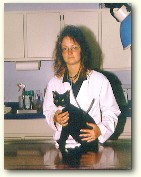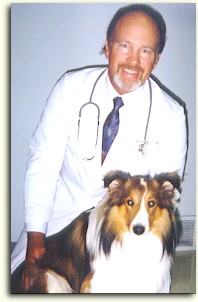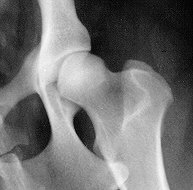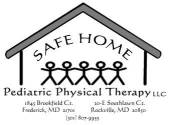|
This spot features answers to questions and/or news of interest from our readers.
Send your physical therapy-related questions, comments, and current therapy/health topics we can share to: pt@oaktreept.com
.
If we answer your question in this column, we will send you an Oak Tree PT ergonomic pen. Please be sure to include your mailing address, to be used strictly for mailing the pen only, and no other
purpose.
I will also be happy to publish in this Readers' Forum any original, relevant, well-written articles
submitted by readers. Just forward your material to:
pt@oaktreept.com.
**Editor's note: This month we feature another news article from Katie Glaser- LeClere, MSPT, owner
of Safe Home Pediatric Physical Therapy, LLC.
 Physical Therapists practicing in a growing niche field face some legal and ethical dilemmas. While PTs usually practice
on humans, many therapists are now developing lucrative practices in animal rehabilitation. These practices apparently conflict
with some state PT practice acts, and with state veterinary practice acts as well. Physical Therapists practicing in a growing niche field face some legal and ethical dilemmas. While PTs usually practice
on humans, many therapists are now developing lucrative practices in animal rehabilitation. These practices apparently conflict
with some state PT practice acts, and with state veterinary practice acts as well.
 One of the volatile issues involves language in many states' practice acts which limits physical therapy practice to individuals.
This language excludes animals as potential recipients of physical therapy services. One of the volatile issues involves language in many states' practice acts which limits physical therapy practice to individuals.
This language excludes animals as potential recipients of physical therapy services.
Steve Strunk is Vice President
of the An imal PT Special Interest Group (APT SIG) within the Orthopedic Section of the American Physical Therapy Association (APTA), and Chair of the Maryland Animal PT Task Force. Last fall his group successfully changed the Maryland practice act terminology
from individuals to patients or clients. This change now puts animal physical therapists in harmony with Maryland's PT practice
act.
 However, the current veterinary practice act limits treatment of animals to those employed under the supervision of a veterinarian,
so veterinarians now find themselves at odds with physical therapists: While veterinarians want to maintain their supervisory
control, physical therapists want autonomy. However, the current veterinary practice act limits treatment of animals to those employed under the supervision of a veterinarian,
so veterinarians now find themselves at odds with physical therapists: While veterinarians want to maintain their supervisory
control, physical therapists want autonomy.
Veterinarians say that physical therapists lack the educational preparation
required for treating animals that all veterinarians must undergo. Physical therapists say that their rigorous training in
neuromusculoskeletal rehabilitation prepares them to treat disorders of the neuromusculoskeletal systems whether they occur
in humans or animals. The basic structures of those systems do not change between species, they say, and the therapeutic principles
of treating those structures also remain basically the same. Animal physical therapists feel they can easily learn to recognize
the anatomical differences between animals.
 As the law now stands, physical therapists working in a veterinary office may provide rehabilitative services to animals,
but they may not bill those services as "physical therapy." Veterinary technicians and aides with little or no formal rehab
education may also provide those services to animals which would be considered "physical therapy" if they were performed on
humans. These services commonly include evaluation of physical status, and interventions such as aquatic exercise, electrotherapeutic
modalities, and gait training. As the law now stands, physical therapists working in a veterinary office may provide rehabilitative services to animals,
but they may not bill those services as "physical therapy." Veterinary technicians and aides with little or no formal rehab
education may also provide those services to animals which would be considered "physical therapy" if they were performed on
humans. These services commonly include evaluation of physical status, and interventions such as aquatic exercise, electrotherapeutic
modalities, and gait training.
Other financial considerations may also present obstacles for therapists who may be
considering developing a practice treating animals. While most physical therapists can obtain liability insurance relatively
inexpensively, many insurance companies do not offer coverage for therapists who treat animals, even for those willing to
pay extra premiums.
 Despite the controversy, many physical therapists find successful and rewarding careers in animal rehabilitation. While these
therapists consider any of the larger animals "fair game" for therapeutic interventions, they most frequently find themselves
treating the canine and equine populations. Despite the controversy, many physical therapists find successful and rewarding careers in animal rehabilitation. While these
therapists consider any of the larger animals "fair game" for therapeutic interventions, they most frequently find themselves
treating the canine and equine populations.
 Many veterinarians do appreciate the educational and professional expertise of physical therapists for managing orthopedic
and neurological conditions in animals. Until veterinarians and physical therapists reach an agreement, however, veterinarians
can still provide rehabilitative services to animals using staff without experience or education in physical therapy or rehabilitation. Many veterinarians do appreciate the educational and professional expertise of physical therapists for managing orthopedic
and neurological conditions in animals. Until veterinarians and physical therapists reach an agreement, however, veterinarians
can still provide rehabilitative services to animals using staff without experience or education in physical therapy or rehabilitation.
Perhaps
the most difficult obstacle for those practicing animal physical therapy may arise from within their own leadership organization.
Because most states' practice acts do not support the practice of physical therapy on animals, the APTA finds itself in a
position where it must re-evaluate continuing its support of the Animal PT Special Interest Group. For more information, visit
the following sites:
APT Special Interest Group, Orthopedic Section, APTA ht tp://www.orthopt.org/sigs/animal_pt_sig/
APTA Emerging Practice: Collaboration with Veterinarians (Members Only) http: //www.apta.org/pdfs/practice/6.pdf
Risk Management 101: Basic Risk Management Considerations for Animal Physical Therapy http://www.utc.edu/F aculty/David- Levine/LegalIssuesLetter.htm
 Katie Glaser-LeClere is a Physical Therapist and founder of S afe Home Pediatric Physical Therapy, providing PT to children and adolescents in the home and community. Safe Home's service areas include Frederick, Montgomery,
Carroll, and Howard Counties in Maryland. Outpatient sites are located in Rockville and Frederick. Katie Glaser-LeClere is a Physical Therapist and founder of S afe Home Pediatric Physical Therapy, providing PT to children and adolescents in the home and community. Safe Home's service areas include Frederick, Montgomery,
Carroll, and Howard Counties in Maryland. Outpatient sites are located in Rockville and Frederick.
EDITOR'S
NOTE: When Katie first wrote me about her article, I thought she meant using animals to provide therapy for people;
for example, Hippotherapy (using horses to improve, e.g., trunk stability and/or sitting balance in humans); or, something like the Eden Alternative. So, before she gently corrected me, I found the following cartoon:
|

